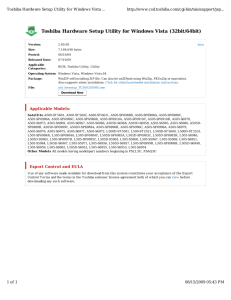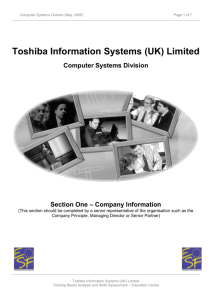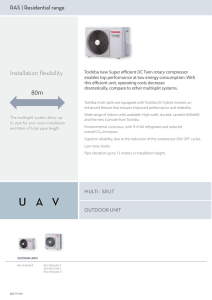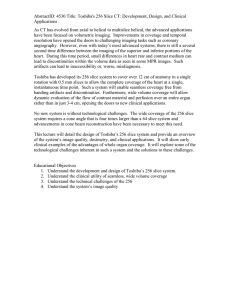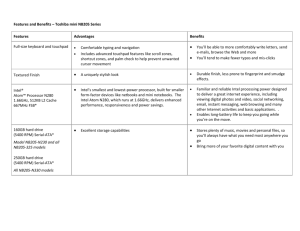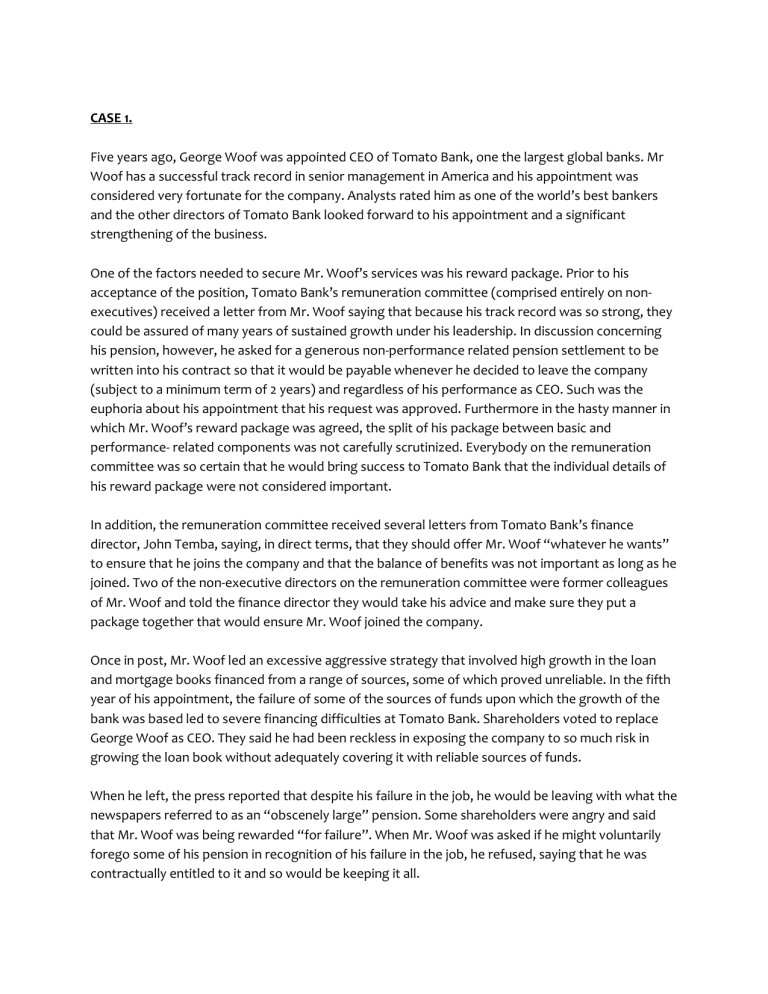
CASE 1. Five years ago, George Woof was appointed CEO of Tomato Bank, one the largest global banks. Mr Woof has a successful track record in senior management in America and his appointment was considered very fortunate for the company. Analysts rated him as one of the world’s best bankers and the other directors of Tomato Bank looked forward to his appointment and a significant strengthening of the business. One of the factors needed to secure Mr. Woof’s services was his reward package. Prior to his acceptance of the position, Tomato Bank’s remuneration committee (comprised entirely on nonexecutives) received a letter from Mr. Woof saying that because his track record was so strong, they could be assured of many years of sustained growth under his leadership. In discussion concerning his pension, however, he asked for a generous non-performance related pension settlement to be written into his contract so that it would be payable whenever he decided to leave the company (subject to a minimum term of 2 years) and regardless of his performance as CEO. Such was the euphoria about his appointment that his request was approved. Furthermore in the hasty manner in which Mr. Woof’s reward package was agreed, the split of his package between basic and performance- related components was not carefully scrutinized. Everybody on the remuneration committee was so certain that he would bring success to Tomato Bank that the individual details of his reward package were not considered important. In addition, the remuneration committee received several letters from Tomato Bank’s finance director, John Temba, saying, in direct terms, that they should offer Mr. Woof “whatever he wants” to ensure that he joins the company and that the balance of benefits was not important as long as he joined. Two of the non-executive directors on the remuneration committee were former colleagues of Mr. Woof and told the finance director they would take his advice and make sure they put a package together that would ensure Mr. Woof joined the company. Once in post, Mr. Woof led an excessive aggressive strategy that involved high growth in the loan and mortgage books financed from a range of sources, some of which proved unreliable. In the fifth year of his appointment, the failure of some of the sources of funds upon which the growth of the bank was based led to severe financing difficulties at Tomato Bank. Shareholders voted to replace George Woof as CEO. They said he had been reckless in exposing the company to so much risk in growing the loan book without adequately covering it with reliable sources of funds. When he left, the press reported that despite his failure in the job, he would be leaving with what the newspapers referred to as an “obscenely large” pension. Some shareholders were angry and said that Mr. Woof was being rewarded “for failure”. When Mr. Woof was asked if he might voluntarily forego some of his pension in recognition of his failure in the job, he refused, saying that he was contractually entitled to it and so would be keeping it all. a/ Criticize the performance of Tomato bank’s remuneration committee in agreeing Mr. Woof’s reward package. b/ Describe the components of an appropriately designed executive reward package and explain why a more balanced package of benefits should have been used to reward Mr. Woof. CASE 2 On July 22, 2015, Masashi Muromachi was appointed president of Toshiba Corporation (Toshiba) after the resignation of the former chief executive officer (CEO), Hisao Tanaka. Tanaka had resigned over the revelation of a JP¥151.8 billion (US$1.2 billion) accounting scandal that shocked the world. At a press conference, Muromachi commented on his new role: “I am strongly feeling the social responsibility of alarming and causing trouble to our 400,000 shareholders, including domestic and international investors, as well as our clients and the authorities concerned. We will devote ourselves wholeheartedly to regain your trust, and revive Toshiba under the new management.” Toshiba, a Japanese multinational conglomerate with net sales of ¥6.5 trillion and total assets of ¥6.2 trillion, had been widely criticized in the news for the multi-billion-dollar accounting fraud. The company’s stock prices had declined by 38 per cent since it announced the accounting probe, and the company had withdrawn the dividend that had been declared earlier. The impact of the decreased share prices and the withdrawal of the declared dividend due to the accounting scandal had been challenging for investors in the company, who had always regarded Toshiba as a reputable company. On September 30, 2015, shareholders protested at an investor meeting, questioning the company officials as to what went wrong. As the Hürriyet Daily News noted, “Nearly 2,000 shareholders turned up to an investor meeting outside Tokyo, peppering a new management team with questions about the affair which led to the resignation of Toshiba’s president and seven other top executives in July.” The investors were wondering the same as everyone else watching the scandal unfold: How could a company with a 140-year history do this, and why? “There was no explanation of what we [wanted] to know most: why it happened and who is to blame,” said one investor. Understanding investors’ concerns and the damage done by the accounting fraud to Toshiba’s investors worldwide, Muromachi, the newly appointed CEO, apologized to investors: “Toshiba Corporation expresses [its] sincere apologies to our shareholders, customers, business partners, and all other stakeholders for any concern or inconvenience caused by issues relating to the appropriateness of its accounting.” However, investors were still haunted by the unsolved puzzle of the accounting scandal. What would the company do in response to this crisis? ABOUT THE COMPANY Toshiba was founded in 1938 with the merger of two firms, Shibaura Seisaku-sho (established in 1875) and Tokyo Denki (established in 1890). The Toshiba Group expanded and was driven by a combination of acquisitions and organic growth in the 1940s and 1950s. The company name was officially changed to Toshiba Corporation in 1978. Since then, Toshiba, headquartered in Tokyo, Japan, had dealt in various products and services, including information technology equipment and systems, industrial and social infrastructure systems, electronic components and materials, consumer electronics, office equipment, household appliances, lighting, and logistics. As of March 31, 2015, the company’s financial and stock data included common stock valued at ¥439 billion and net sales of ¥6.7 trillion (US$55 billion), with 4 billion shares issued. The company employed approximately 200,000 people. Toshiba marketed itself as committed to improving the quality of life for all people and ensuring progress in the world community. Domestically, Toshiba was listed on the Tokyo Stock Exchange (TSE), Nagoya Stock Exchange, and Osaka Securities Exchange. As of March 2015, Toshiba had diversified into energy and infrastructure, community solutions, healthcare systems and services, electronic devices and components, lifestyle products and services, and others. Financial Performance before 2008 Toshiba had enjoyed good overall sales and performance until 2008, with the net sales of the company growing from ¥5.2 trillion to ¥7.2 trillion by the end of March 2008. At the beginning of 2008, Toshiba was in fourth position in the global portable personal computer market. Financial Performance, 2009–2014 During 2009, Toshiba recorded disappointing results. The company implemented action programs to improve its profitability by bringing in a ¥319.2 billion public offering to increase its capital expenditure (mainly for strategic investments). From 2009 to 2013, Toshiba’s total sales decreased from ¥6.5 trillion to ¥5.8 trillion, a fall of approximately 11 per cent. In June 2013, Hisao Tanaka was named the president and CEO of Toshiba Group, while Asotosh Nishida held the position of chairman of the board of directors. The economic growth the firm had experienced was better than the previous year, but in terms of global economic growth, issues with the external business environment persisted. For the fiscal year ending in March 2014, all business segments showed better sales and growth; as a result, the overall net sales of the company increased to ¥6.5 trillion, up from ¥5.8 trillion in the year ending March 2013. The operating income rose to ¥290 million, an increase of 47 per cent, for the same period (see Exhibits 1, 2, and 3 below). Financial Performance, Q1 2015 For the first quarter of the financial year ending March 31, 2015, the net sales of the company stood at ¥1,349 billion. In terms of operating income, the company incurred an operating loss of ¥11 billion, leading to a net income (loss) attributable to shareholders amounting to ¥12.3 billion. THE FACTS OF THE ACCOUNTING FRAUD On February 12, 2015, Toshiba received an order from the Securities and Exchange Surveillance Commission (SESC) to allow a disclosure inspection with respect to some projects in which a percentage of completion method of accounting, among other methods, was used (see Exhibit 4). The Japanese market regulator investigated Toshiba’s accounting methods under the authority granted by Article 177 of the Financial Instruments and Exchange Act. The SESC’s investigation was launched in response to a whistleblowing tip, the details of which were never disclosed. It was then unclear whether the irregularities were due to errors or were deliberate. Technology experts helped to recover deleted and old email messages that connected Toshiba with accounting fraud. The recovered emails contained messages suggesting the use of misleading practices, confirming that the irregularities were not simply errors: they were intentional manipulations. An internal investigation committee was set up by Toshiba to investigate the company’s book of accounts from financial year (FY) 2009 through the third quarter of FY2014. FY2008 was also included, but as a comparison year for the FY2009 securities report. When the committee revealed the various fraudulent distortions across various Toshiba companies, Toshiba had no other choice but to establish an independent investigation committee, which first met on May 8, 2015. The independent investigation committee consisted of members from outside the company, as opposed to the company -appointed members of the internal committee. The problem was identified as accounting fraud when investigators found evidence of overstated profits in various Toshiba business units, including the visual products unit, the personal computer unit, and the semiconductor unit. It was found that the total amount of contract costs was underestimated, and contract losses were not recorded in a timely manner. The fraud had begun under CEO Atsutoshi Nishida in 2008, in the middle of the global financial crisis, which had drastically reduced Toshiba’s profitability. The fraud had evidently continued with the same intensity under the next CEO, Norio Sasaki. In June 2013, Hisao Tanaka, a long-time manager of procurement and manufacturing in Toshiba’s consumer electronics division, was promoted the position of president and CEO. As part of his management strategy, Tanaka pushed his employees to meet their budget targets. The fraud continued under Tanaka in this budget-conscious environment, and eventually ended in scandal. Toshiba had a policy of personnel rotation after every few years. Due to this policy, by the time a project was finished, the person who initiated it was gone and his or her successor was held responsible for the losses of the project, if any. This system led to making immediate goals a priority, even if it meant taking orders at a loss. In one of Toshiba’s manufacturing contracts, the cost of the ordered work was expected to exceed the negotiated price; however, the company did not record a provision on the balance sheet for any loss-making contracts. In another project, Toshiba exaggerated its cost reductions. A review of the contract work concluded that ¥1.7 billion could be shed in costs; however, in reality, the costs were only reduced by ¥100 million. To meet its profit targets, Toshiba implemented a plan to carry over and overstate profits by adjusting profits and losses—a practice that had been going on since 2008. It was determined that Toshiba used a cash-based method for its accounting instead of using the accrual method. The company had also requested that its vendors issue postdate invoices in order to show those expenses in the next quarter, even though the expenses had already been incurred. The company has also failed to record some items, such as valuation losses, loan loss allowances, and so on. Eight of the 16 members of the board resigned after the fraud become known. TOSHIBA’S CORPORATE CULTURE According to a summary of the investigator’s report, “Toshiba had a corporate culture in which management decisions could not be challenged.” The investigation report further stated that “employees were pressured into inappropriate accounting by postponing loss reports or moving certain costs into later years.” Toshiba’s accounting fraud occurred less than four years after the Olympus Corporation scandal with accounting fraud. In light of these instances of fraud in Japan, Japan’s finance minister, Taro Aso, called the accounting fraud at Toshiba “very regrettable” and “a blow to the country’s efforts to regain the confidence of global investors”. He also added, “If Japan fails to implement appropriate corporate governance, it could lose the market’s trust.” THE SITUATION BY SEPTEMBER 2015 The fraud was detected on July 21, 2015, and showed overstated earnings of ¥152 billion. On August 3, 2015, Toshiba was removed from the Dow Jones Sustainability World Index. Toshiba planned to decide in late September how to punish its non-executives who were caught in the fraud. To prevent the reoccurrence of such a situation, Toshiba said that it would scrap its monthly resident’s meetings, where employees were told by top management to achieve unrealistic targets. The company also decided to sell some of its assets to recover part of the funds lost to the fraud. By September 29, 2015, Toshiba’s shares were at ¥292.8, a significant decrease from the peak stock price of ¥539.9, attained in December 2014. Mark Newman, an analyst at Sanford Bernstein, said that the financial impact was likely to be manageable because of Toshiba’s flash-memory business. That business supplied smartphone makers such as Apple Inc., and was expected to provide a majority of the company’s operating profit in the current year. Yoshihiro Nakatani, a senior fund manager at Asahi Life Asset Management, had recommendations for Toshiba: “They need to change into a more transparent organization, which could mean the executives stepping down and bringing more outside directors… There is an increasing chance of a downgrade…Concerns are mounting that this will begin to affect the company’s relationship with financial institutions” On September 14, 2015, the TSE, under its Securities Listing Regulations, designated the shares of the company as “security on alert”, effective September 15, 2015. The TSE required payment from the company in the amount of ¥91.2 million as a listing agreement violation penalty. The fears of Toshiba’s shareholders intensified. EXHIBIT 1: CONSOLIDATED STATEMENTS OF INCOME, TOSHIBA GROUP (¥ BILLIONS) 2009 2010 2011 2012 2013 2014 Net sales 6,364,800 6,129,900 6,270,700 5,994,300 5,727,000 6,502,500 Cost of sales Selling, general, and administrative 5,103,905 4,710,778 4,781,880 4,538,563 4,313,956 4,854,349 1,357,430 1,493,754 1,301,472 1,250,128 1,253,156 1,215,289 expenses Operating income (loss) −232,859 117,600 238,700 202,600 197,700 290,800 Income (loss) from continuing operations −259,677 27,200 194,700 145,400 159,600 180,900 Income taxes Net income (loss) attributable 61,562 −343,559 33,534 −19,700 407,200 137,800 64,200 70,100 59,315 77,400 96,299 50,800 EXHIBIT 2: CONSOLIDATED BALANCE SHEETS, TOSHIBA GROUP (¥ MILLIONS) Assets 2009 2010 2011 2012 2013 2014 Current assets 2,720,631 Long-term receivables and 534,853 investments Property, plant, and 1,089,579 equipment 2,761,606 2,799,668 3,009,513 3,160,440 3,209,224 622,854 660,380 701,225 706,188 664,646 978,726 900,205 851,365 884,680 960,035 Other assets 1,087,987 1,019,066 1,190,634 1,348,694 1,407,718 1,108,162 Total assets 5,453,225 5,451,173 5,379,319 5,752,737 6,100,002 6,241,623 Liabilities and equity 2009 2010 2011 2012 2013 2014 1,033,884 257,364 311,762 326,141 433,128 203,523 Short- term debt Other current liabilities 2,033,889 Total current liabilities 3,067,773 Long-term debt Other long-term 2,231,081 2,488,445 2,186,547 2,343,421 2,498,309 2,304,311 2,669,562 2,388,523 2,737,439 2,592,046 776,768 960,938 769,544 909,620 1,038,448 1,184,864 849,403 874,168 931,850 943,344 908,038 812,386 liabilities Total long-term liabilities Equity attributable to shareholders 1,626,171 1,835,106 1,701,394 1,852,964 1,946,486 1,997,250 447,346 797,455 868,119 863,481 1,034,268 1,229,066 311,935 330,167 311,497 366,730 381,809 423,261 5,453,225 5,451,173 5,379,319 5,752,737 6,100,002 6,241,623 Equity attributable to noncontrolling interests Total L & E EXHIBIT 3: CONSOLIDATED STATEMENT OF CASH FLOWS, TOSHIBA GROUP (¥ MILLIONS) Cash flows 2009 2010 2011 2012 2013 2014 Net cash provided by (used in) operating activities −16,011 451,445 374,084 334,997 132,316 286,586 Net cash used in investing activities −335,308 −252,922 −214,700 Free cash flows Net cash provided by (used in) financing activities Effect of exchange rate changes on cash and cash −351,319 478,452 198,523 −277,861 159,384 −154,716 −42,230 −240 −64,031 41,772 40,031 −89,309 −31,989 equivalents Net increase (decrease) in cash and cash equivalents 95,144 2,994 −13,277 −2,065 17,123 11,449 −76,344 −8,609 −44,535 −5,136 −37,829 Cash and cash equivalents at beginning of year 248,649 343,793 267,449 258,840 214,305 209,169 Cash and cash equivalents at end of year 343,793 267,449 258,840 214,305 209,169 171,340 −377,22 −196,347 EXHIBIT 4: PERCENTAGE OF COMPLETION METHOD OF ACCOUNTING This method of accounting recognizes a portion of revenue associated with a long-term contract in each accounting period of construction or production under the contract. The percentage of completion is typically estimated by dividing the total construction costs incurred to date by the total estimated costs of the contract or job. % complete = (Total construction or production costs to date) / (Total estimated costs of contract) Total estimated revenue, or gross profit, is then multiplied by this percentage of completion to derive the total revenue or gross profit that has been earned to date. Gross Profit to date = % complete x Total Estimated Gross Profit Percentage of completion follows the accrual principle of accounting and matches expenses with related revenue. −246,555 Questions 1. What factors motivated Toshiba to commit accounting fraud? (What pressure?) 1. 2. 3. 4. 2. List of factors that increased the likelihood of manipulation? 1. 2. 3. 4. 3. What are the justifications for committing fraud? (rationalizations for the fraudulent actions) 1. 2. 3. 4. 4. What options are available for the 1. company moving forward? How can it prevent such fraud in the future? 2. 3. 4. CASE 3. The executive compensation committee of Blue Cross Blue Shield Board has come up with the following reward package for the CEO, Redmayne for the coming year: Base salary: $1 million. This salary is the standard for the CEO of a large public corporation. The Blue Cross Blue Shield Corporation does not want to cross this $ 1 million since the amount exceeding $1 million would not be tax-deductible. Short term incentive: For every 1% over a threshold of 7% ROE, Redmayne received a $1,500,000 bonus. He also received an additional $250,000 for every 0.5% improvement over the prior year. Long-term incentive: Redmayne had received stock options for 500,000 shares at $15 dollars a share 5 years earlier. Since then, Redmayne had received annual grants of 100,000 shares (see the following table for details) Year ROE (%) Actual year 2012 12.04% 2013 11.5% 2014 6.5% 2015 7.8% Number of shares issued Exercise price ($) upon exercise of outstanding options 2011 500,000 15 2012 100,000 20 2013 100,000 25 2014 100,000 30 2015 100,000 27 a/ Calculate the cash compensation of Redmayne for the three years 2013, 2014, 2015 b/ In what year should Redmayne exercise his stock options to maximize the proceeds? (Assuming that he has to exercise all his outstanding stock options up to that year)
